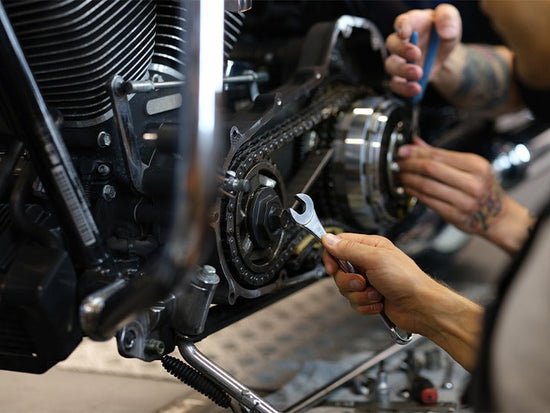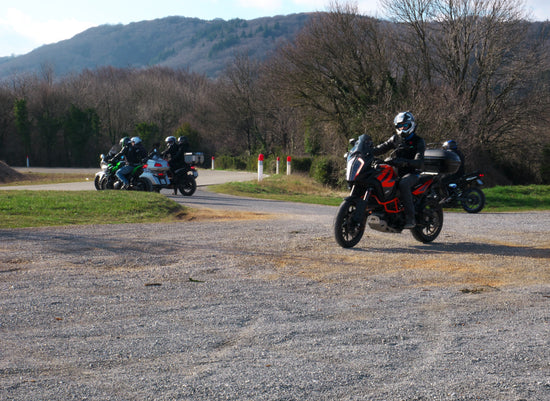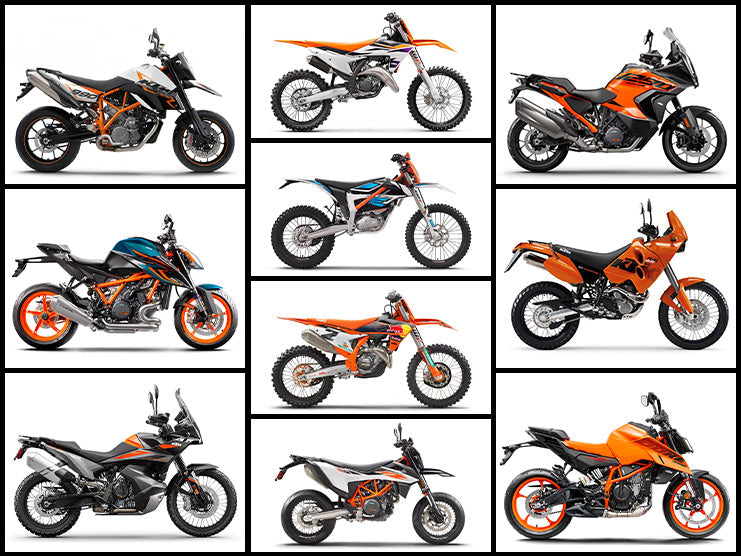Table of Content
No matter how many years of motorcycle riding experience you have, if your motorcycle still jerks when you release the clutch, you are considered an inexperienced rider. Knowing how and when to engage and release the clutch is a key riding skill that makes you a good rider. The clutch is also the key mechanical part of motorcycles with manual transmissions. Using a clutch, you can control the engine power delivered to the rear wheel. Also, you must use the clutch to shift gears and ride smoothly. Therefore, for a smooth riding experience, you must master the clutch control. Read this article to learn how to improve your clutch control on a motorcycle.
1. Why is Clutch Control Important?
- For a beginner, clutch control is important for keeping the motorcycle running smoothly. You cannot accelerate until you engage and disengage the clutch smoothly to avoid stalling. If you do not have good clutch control, your motorcycle can stall during the ride, which can be dangerous, especially if you are riding at moderate speeds on a road.
- Good clutch control is also important for smooth gear shifting and rides. If you hear the clunky sound every time you shift a gear, it means you do not have good clutch control and it can cause damage to the gearbox.
- Good clutch control is important for slow-speed riding, especially in stop-and-go traffic when you have to keep engaging the brake as well, along with the clutch to avoid stalling.
- Having good clutch control is important for hill starts.
- Having good clutch control also helps in duck walking and hauling a motorcycle on a trailer.
2. How Does the Clutch Work?
In simple words, a clutch acts as a bridge/connection between the engine and the motorcycle's rear wheel. The plates are installed in the engine, called the clutch plates, which are controlled by the clutch lever installed on the handlebars. By pressing the clutch lever, the rider can cause the clutch plates to move. When the rider engages the clutch by pulling the clutch lever, it disengages the engine from the rear wheel. It results in zero power output at the rear wheel when the clutch is fully engaged. However, as you slowly disengage/release the clutch lever, the motorcycle starts accelerating slowly if it is in gear as the engine power is now delivered to the rear wheel.
Also Read: WHY IS MY MOTORCYCLE CLUTCH SO HARD TO PULL?
3. How to Improve Your Clutch Control on a Motorcycle?
3.1 How to Release the Clutch Correctly on a Motorcycle
The first thing to learn if you are new to motorcycling is how to engage and release the clutch correctly. The right way to engage and disengage the clutch is to do it slowly to avoid stalling, nose lifting, and hitting your motorcycle. To ensure better control of your motorcycle, slowly release the clutch lever when your motorcycle is in the first gear. Start opening your fist slowly as your motorcycle starts to accelerate at a safe pace. Keep practicing this exercise until you master the clutch control. You will also get to learn how your motorcycle engine responds to the clutch and how you can control the engine power. Precision is important in this regard as even a small clutch lever movement, when your motorcycle is in gear, can provide abrupt power and traction to the rear wheel.
3.2 How to Adjust the Rate of Releasing the Clutch
Riders should also learn and adjust the amount and pace of releasing a clutch because the power output can be different in different clutch settings and engagements. For example, when you are releasing the clutch, at first the motorcycle may not respond to that change. However, halfway while releasing the clutch, the motorbike will accelerate quicker. So, you must adjust the rate of releasing the clutch accordingly.
3.3 How to Adjust Your Clutch Lever
Most motorcycles come with easily adjustable clutch and brake lever options. The position of your motorcycle clutch lever plays a crucial role when it comes to ensuring better clutch control. Although it majorly depends on your preferences, a motorcycle clutch lever that is in line with the rider’s forearm provides better clutch control and feels comfortable while engaging and disengaging the clutch.
In some motorcycles, the distance between the handlebar and the clutch lever can also be adjustable. To ensure better clutch control, make sure that the clutch is not too distant from your handlebars’ grips. Your motorcycle clutch lever should be at a distance from the handlebars’ grips only if your hands are bigger.
Also Read: HOW TO IMPROVE CORNERING ON YOUR MOTORCYCLE
3.4 How Many Fingers to Use While Engaging the Clutch Lever?
It also depends on your riding preferences and what suits you the best; however, it is better to use your four fingers (complete grip) to engage and disengage the clutch for smooth and safer operation.
Moreover, for off-roading on a dirt bike, you can use one or two fingers to engage or release the clutch, whichever feels more comfortable. While off-roading on a dirt bike, you will have to keep engaging and releasing the clutch several times and if you do it with all your fingers, your hand can go numb or your forearm muscles can get stiff, which can be extremely uncomfortable.

3.5 The Connection Between the Clutch and Throttle
You cannot learn how to improve your clutch control on a motorcycle without knowing the throttle control. If your motorcycle is in first gear and you are releasing the clutch to accelerate without opening up the throttle, your motorcycle will stall. So, to become good at riding a motorcycle, you must be better at both the clutch and throttle control. As you release the clutch slowly, you should also open up the throttle at the same pace to accelerate without stalling.
3.6 Stop-and-Go Exercise
To become better at clutch and throttle control, you should practice the stop-and-go exercise.
- Find an open area or an empty parking lot.
- Put your motorcycle in neutral at first.
- Engage the clutch.
- Put your motorcycle in first gear.
- Slowly release the clutch and slowly open the throttle at the same time.
- Then apply brakes while engaging the clutch again.
- Before coming to stop completely, disengage the clutch and open the throttle slowly.
- Make sure not to touch the ground with your feet during the exercise.
- Keep the throttle slightly open during this exercise to avoid stalling
This exercise helps you learn important riding skills, including:
- Using the clutch in conjunction with the throttle.
- Improving the clutch and throttle control.
- Learning slow speed control and maneuvering.
- Avoid stalling.
3.7 Rocking the Motorbike
This exercise is the most common and simplest technique to improve your motorcycle clutch control and it can be performed anywhere on a motorcycle. The most perfect spot to perform it is when you are stopped at a traffic signal. It is similar to the stop-and-go exercise, but you do not have to accelerate or ride your motorcycle while doing this exercise.
- When your motorcycle is at rest, engage the clutch while both your feet are touching the ground.
- Slightly open the throttle to an extent where it does not accelerate even after releasing the clutch to a certain extent, ensuring that the motorcycle does not jump off.
- As the motorcycle gently moves a little forward, pull the clutch again while keeping the throttle at the same position.
- The motorcycle will gently come backward.
- This exercise will make the motorcycle move in a to-and-fro or rocking motion.
This exercise will also help you in different ways, including:
- Improving your clutch control.
- Using the throttle in conjunction with the clutch.
- Understanding your motorcycle more effectively.
- Controlling the engine power, eventually makes you a better rider.
Also Read: HOW TO AVOID AND CONTROL A MOTORCYCLE SKID
4. The Bottom Line
Learning how to ride a motorcycle, particularly a manual motorcycle, can be tricky if you know nothing about a motorcycle. If you have not practiced riding a motorcycle, you may know how much power a particular motorcycle produces and how fast it can go by seeing other riders. However, you can only learn how to control the engine power and ride safely when you practice riding a motorcycle. A clutch is an integral part of a motorcycle. Having better clutch control ensures both the rider's and the motorcycle’s safety. If you know how and when to use your motorcycle clutch, you can have better command over your motorcycle and keep it running smoothly. Incorrect clutch operation can cause the clutch assembly and gearbox to wear out quickly. It does not matter if you are a newbie or an intermediate rider, this article brings you effective ways to improve your clutch control on a motorcycle.
Apart from improving your riding skills, you should also consider improving the comfort, performance, and aesthetics of your motorcycle. To help you with this, Viking Bags offers you the best-quality motorcycle equipment, including fairings , sissy bars , crash bars , and backrests to get your motorcycle ready for long-distance rides. At Viking Bags’ online store, you can also find saddlebags , trunk bags , tank bags , and backpacks of the finest quality.







Leave a comment
All comments are moderated before being published.
This site is protected by reCAPTCHA and the Google Privacy Policy and Terms of Service apply.